
julibrissin Silk tree, Mimosa tree Van den Berk Nurseries
The Persian silk tree (Albizia julibrissin), hails from the Middle East and Asia and features fern-like leaves and exotic-looking flowers.On each leaf, there are tiny leaflets that close when touched or as the sun sets. The stunning pink flowers that initially drew attention towards the silk tree inspire the origin of its common name.
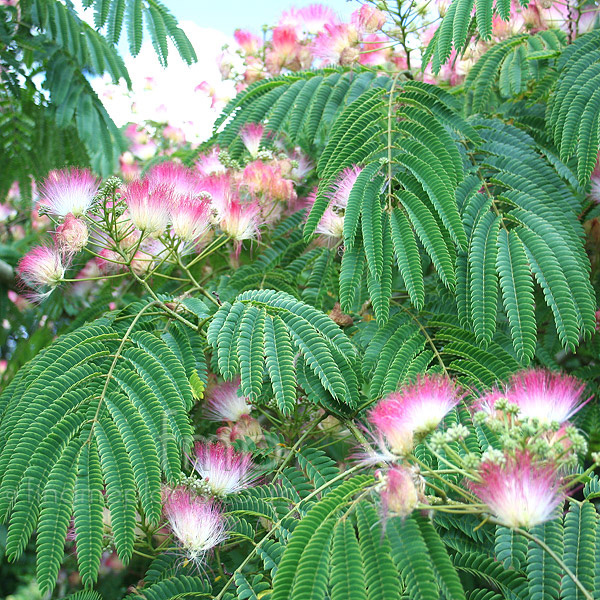
julibrissin 'Rosea' Information, Pictures & Cultivation Tips
Albizia julibrissin Rosea is a small cultivar with intensely pink flowers and can withstand frosts very well. They attract bees and butterflies to your garden. Soil: Any well drained soil. Maintenance: Mulch and water well in summer - feed with Blood and Bone once a year in spring or summer.

julibrissin Rosea Arbre à soie à fleurs rose soutenu
Albizia julibrissin, also known as the Persian silk tree silk, Pink silk tree, and sometimes as the Mimosa tree. It is a deciduous tree native to Asia. This tree is noted for its green feathery foliage and produces a burst of pink flowers. Persian Silk Tree (Albizia julibrissin) photograph by Jim, the Photographer.

julibrissin 'Rosea' in Roath Park Botanic Garden
A. julibrissin f. rosea is a rounded, large shrub or small tree with bipinnate, mid-green leaves divided into sickle-shaped leaflets and spherical, fluffy, rose-pink flower heads in summer. Albizia julibrissin f. rosea - Shoot

julibrissin Perzische slaapboom Tuin Pinterest julibrissin, Plants and
Noteworthy Characteristics. Albizia julibrissin, commonly called mimosa or silk tree, is a fast-growing, small to medium sized, deciduous tree that typically grows in a vase shape to 20-40' tall with a spreading, often umbrella-like crown.It is native to Asia (Iran to Japan). It has been widely planted in the U. S. as an ornamental and has escaped cultivation and naturalized in many areas of.
Trees of Santa Cruz County julibrissin 'Rosea' Rosea Silk tree
Also known as silk trees and Albizia silk trees, these beauties have a lovely feathery habit with wispy pink to rose aromatic flowers. Ideal for USDA planting zones 6 through 9, this tree provides light shade and adds a lovely burst of color amongst other deciduous or evergreen trees, or when used as a specimen. The fringed foliage ranges from.
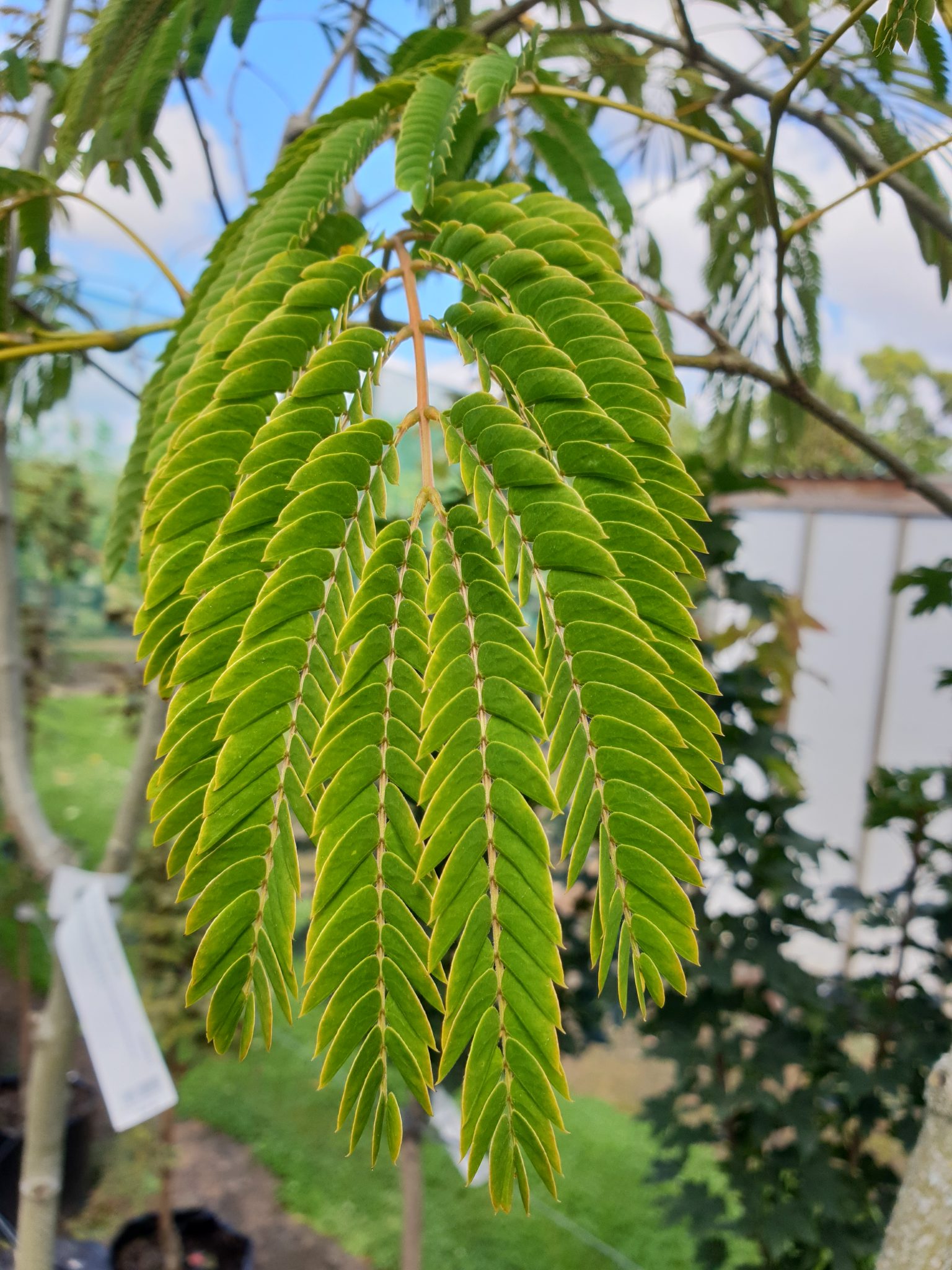
julibrissin 'Rosea' Little Big Tree Company Christchurch New Zealand
A winter-hardy variety of the silk tree, A. julibrissin var. rosea, which is dwarf and bushy, with bright, strong pink flowers, has been introduced from the Korea Republic to northern countries. Another variety, A. julibrissin var. mollis, with broader and densely pubescent leaflets, grows in the Himalayas and Ethiopia.

julibrissin 'Rosea' in Roath Park Botanic Garden
Albizia julibrissin (known as Persian silk tree or mimosa) is native to Asia but was introduced to the United States in the 18th Century, where it's commonly grown. It has fragrant, bottlebrush pink-white flowers, and fern-like leaves. Hardy throughout the UK, it makes an excellent tree for a sheltered, sunny spot, although it does take a while to come into growth in spring.
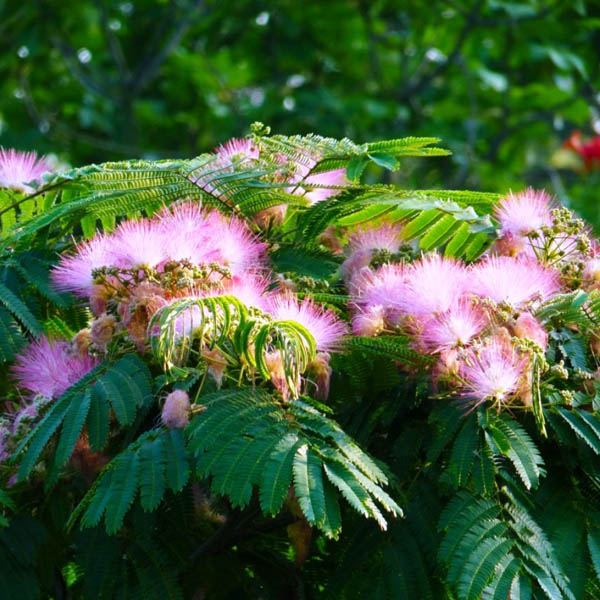
Buy julibrissin,Pink Silk Tree, seed Australian Seed
Albizia julibrissin rosea is a small soft foliaged deciduous tree with delicate pink fluffy flowers that stand above the large, soft fern leaves flowering throughout summer. Very quick growing. A great feature, shelter or screening tree. Plant in full sun or part shade in moist well drained soil, prefers a reasonably sheltered position, water.
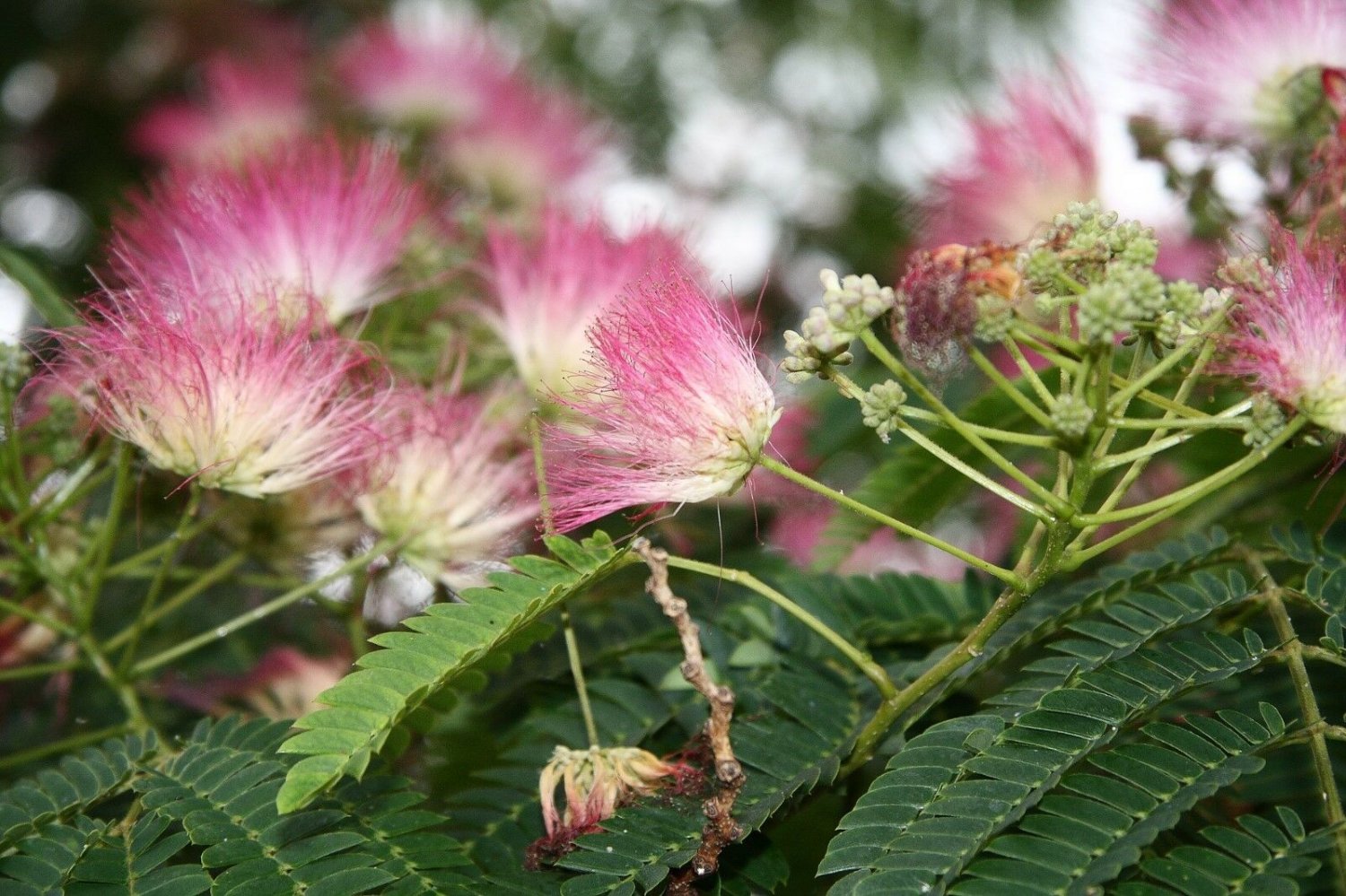
julibrissin rosea (Pink silk tree) Plant
Albizia julibrissin 'Rosea' Framing the entrance to the cycle park at Brookside, Albizia julibrissin 'Rosea' is a show-stopping plant. Occurring in a band from Iran to Japan, Albizia julibrissin is a member of the pea family, Fabaceae, and is closely related to the mimosas.

julibrissin 'Rosea' in Roath Park Botanic Garden
Home / Plants / Albizia julibrissin rosea. Albizia julibrissin rosea (Silk Tree) Exotic low spreading deciduous tree from Central and East Asia. Masses of red powder puff flowers from July on.. Not so with Albizia. We always put them in what might appear to be unnecessarily enormous pots and for very good reason.
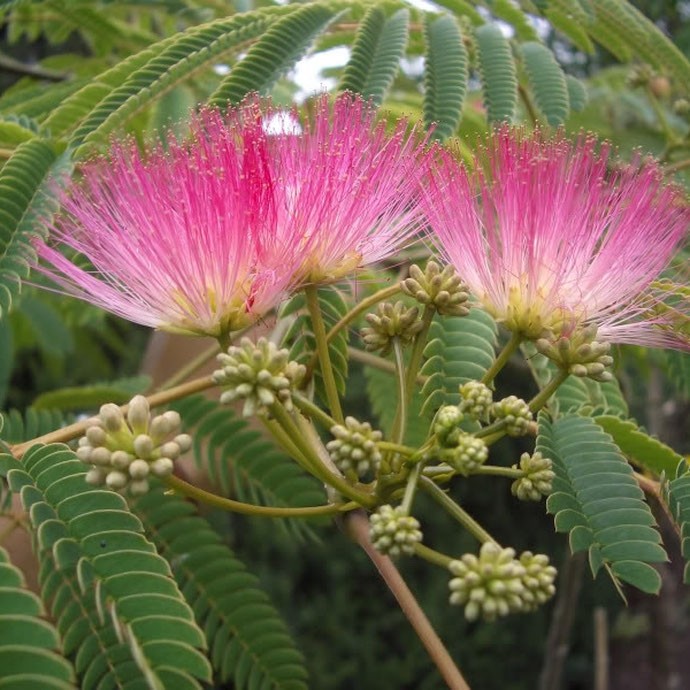
julibrissin Rosea Silk Tree 80cm Tree Special Deals Garden Plants
Fast-growing, award-winning Albizia julibrissin f. rosea (Pink Silk Tree) is a small to medium-sized, deciduous tree with a flat-topped, spreading canopy of large, fern-like bipinnate, green leaves. Sensitive, the leaflets fold when touched and at night. Fluffy rose-pink, powder puff flowerheads, with prominent stamens, open in early summer and cover the tree until mid-summer.
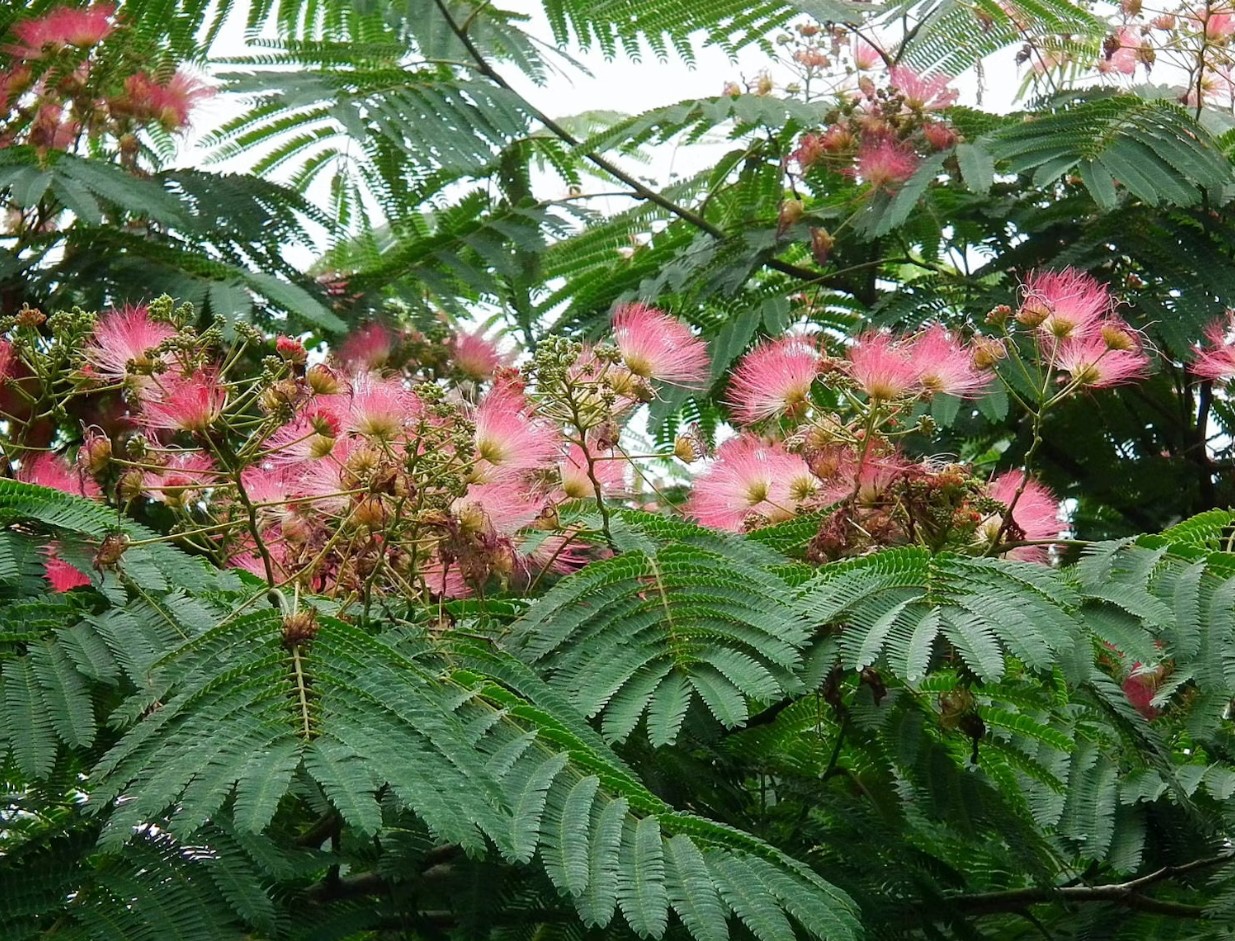
julibrissin 'Rosea' PB18 Springvale Garden Centre
Albizia julibrissin: Mimosa 1. Edward F. Gilman and Dennis G. Watson 2. Introduction.. 'Rosea' ('Ernest Wilson') has bright pink flowers, is hardier than the species, and is 10 to 15 feet in height; 'Rubra' has deep pink flowers. 'Charlotte', 'Tyron', and 'Union' are reportedly wilt resistant and may be coming into production in selected.

Julibrissin Rosea. Shrubs for Sale UK. Letsgoplanting.co.uk
Albizia julibrissin, the Persian silk tree, pink silk tree, or mimosa tree, is a species of tree in the family Fabaceae, native to southwestern Asia and eastern Asia.. The genus is named after the Italian nobleman Filippo degli Albizzi, who introduced it to Europe in the mid-18th century. It is sometimes incorrectly spelled Albizzia.The specific epithet julibrissin is a corruption of the.
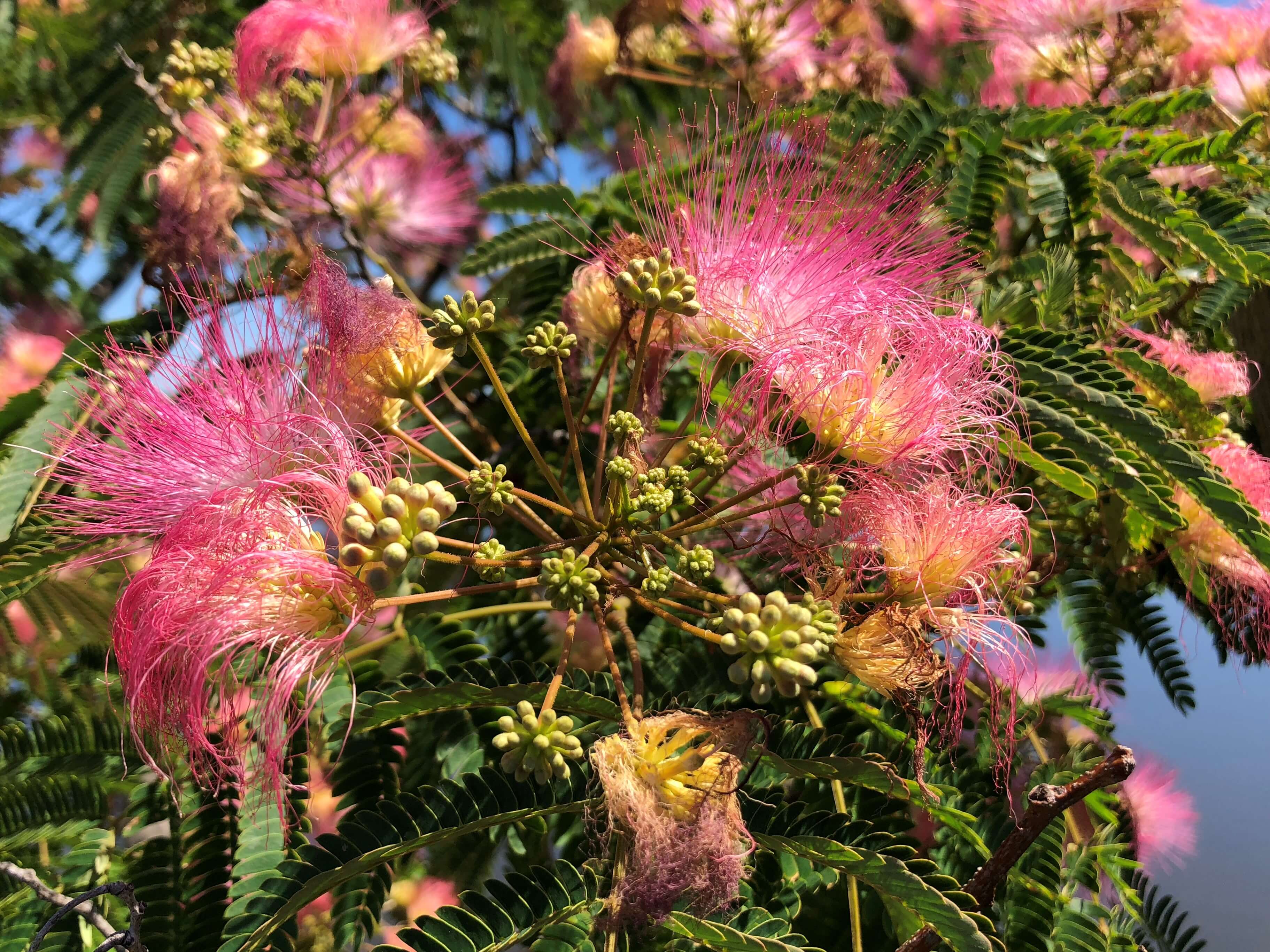
julibrissin 'Rosea' Riverside Garden Centre
Albizia julibrissin 'Rosea' Pronunciation: al-BIZ-ee-uh ju-lee-BRI-sin RO-zee-uh. SKU #00195. USDA Zone. 6-9. Good to grow! 8 Change Location. Find In Store. Add To Wishlist. OVERVIEW. OVERVIEW; Description: A colorful landscape tree, noted for its especially colorful, deep, rosy-pink, pincushion-like, summer flowers. Creates an exotic umbrella.

julibrissin Rosea (Silk Tree) J Parker Dutch Bulbs
Albizia julibrissin f. rosea. The RHS Award of Garden Merit (AGM) helps gardeners choose the best plants for their garden. RHS Plants for Pollinators plants. This plant will provide nectar and pollen for bees and the many other types of pollinating insects.